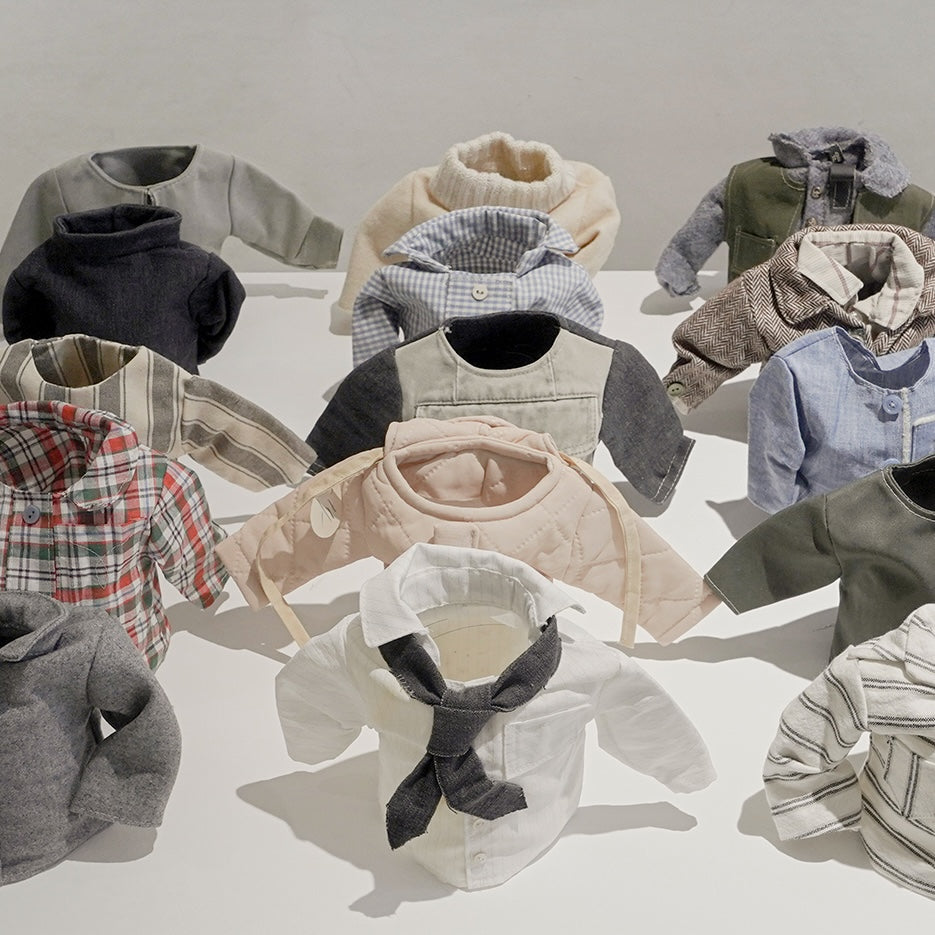
Collect Week: Kari Anne Helleberg Bahri - 5 Minutes with a Friend
Today, we hear from Kari Anne Helleberg Bahri, whose textile-based installations explore human experiences through the language of clothing. Using second-hand fabrics - often her own garments - she works with materials that bear visible traces of wear, allowing the personal and private to surface.
Inspired by the idea that textiles form a boundary between the individual and society, her work seeks to reveal the emotional and psychological states that lie beneath. Through reinterpreting clothing beyond its functional role, she transforms fabric into a powerful medium for storytelling and human connection.

What is your first memory of textiles?
I can't recall a specific memory, but looking at old photos I see myself from an early age (and my friends) often dressing up in old clothes, hats, scarfs, curtains and so on. I think I always have used textiles and clothes to express myself and transform.
I have always been conscious of the mental effect my clothes have on me. I can not dress in the 'wrong' clothes, it has to suit my mood or state of mind - either telling the truth, or showing what I want others to see. In recent years I have only dressed in grey/black, I feel neutral and free. Through my work with textiles I get outlet for my thoughts and how I view the world.

Where is your must inspiring space/place to create?
The best place to get new ideas is in cafes. I need humming voices and that life goes on around me to get energy, a coffee to start my engine, maybe an old magazine with pictures to start the brain playing with shapes - and my notebook. In cafes I feel relaxed (and invisible) and at the same time it crackles and sparkles inside of me.
Where did you learn your craft?
I studied fashion and costume design at Oslo National Academy of the Arts. Before that I went to a private art school for three years. Both schools focused on the idea rather than the craft. I learned that if you really want to make something, you find a way to do it (if that means learning a craft). I never learned to be a good craftsman or seamstress but I learned to carry out my ideas. My stitching and sewing today is a big part of the content of my work, it expresses the personal, the imperfect, the authentic and human.

What is the inspiration behind your work for Collect 2025?
In general my work is concerned with human conditions and situations that feels limiting for the person involved.
My artwork 'Every Day' is a wall-piece with five small shirts standing in a row. It is made of old shipping bags (work related textile). The grey, shabby shirts made of rough, worn old textile depicts everyday life (workdays), how we routinely continue in the same pattern and continue to live like the day before.
 I often use shirts as a picture of man adapting to society's expectations. Variety of colour, pattern, material etc. symbolises different groups of people, their situation, education and so on.
I often use shirts as a picture of man adapting to society's expectations. Variety of colour, pattern, material etc. symbolises different groups of people, their situation, education and so on.
My piece 'Lag' consists of several cocoon-like/sleeping bag forms reflecting around the necessity of rest and ineffective periods where you actually are developing and processing life. Like a butterfly develops from the cocoon – after inactivity you become something more than you were before – you have matured.
In todays society work and financial success is celebrated, even if we compromise our own health. Inefficiency is seen as laziness and is not attractive. When the body shuts down and is tired, we feel guilty and worthless but inactivity is necessary to grow and change as a person.
 What is it you love about textiles?
What is it you love about textiles?
There are so many things I love about textiles. All the varieties, the qualities and the different properties. I love how a lot of textiles get more beautiful when they have been used and have lived a long life. I love that the flat/one-dimensional textile can be manipulated and easily shaped into three- dimensional objects.
I love that everybody knows and has experiences with textiles and clothes - the material I use in my art. I hope that gives the viewer an entry into my work and it therefore becomes more accessible for the public.
-
Further Information:
Website: Kari Anne H Bahri
Instagram: @kariannehellebergbahri
Kari at the Collect Fair: Bluerider ART
-
Image Credits:
All images courtesy of Kari Anne Helleberg Bahri
